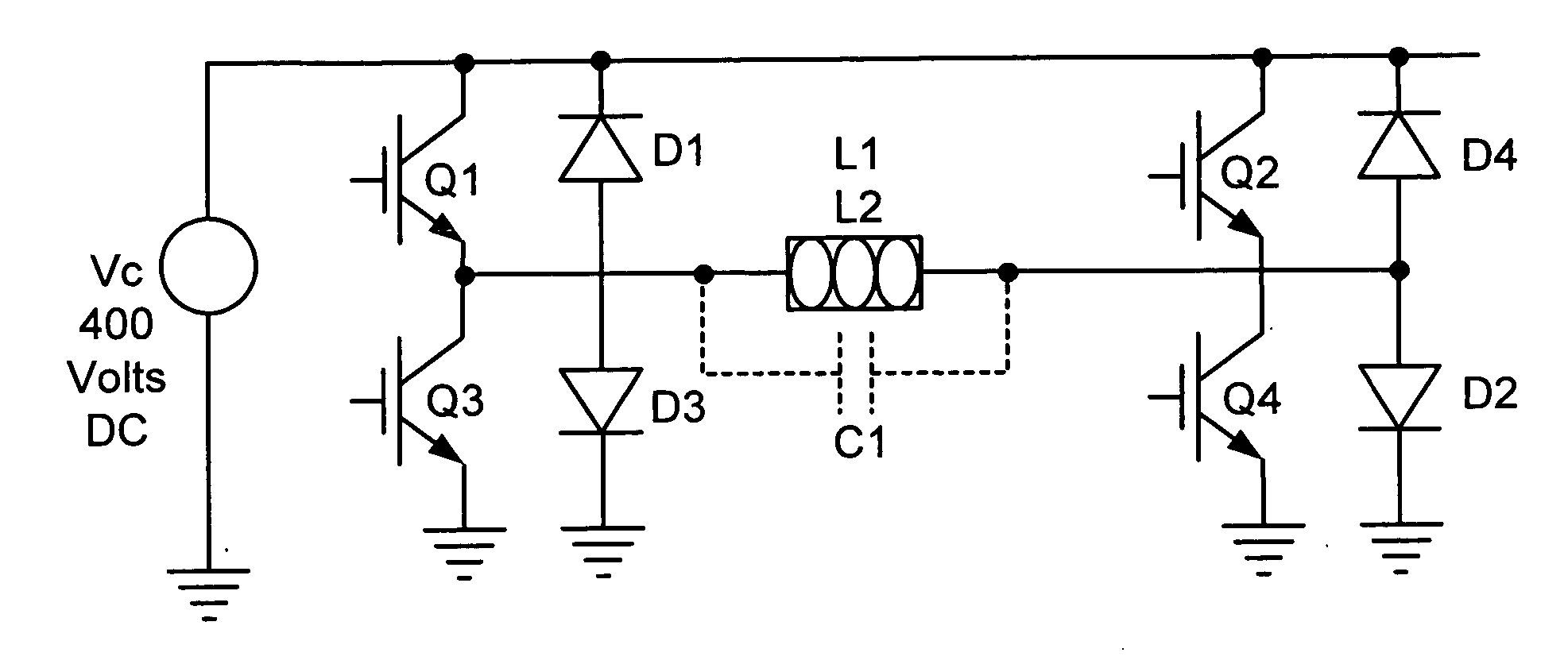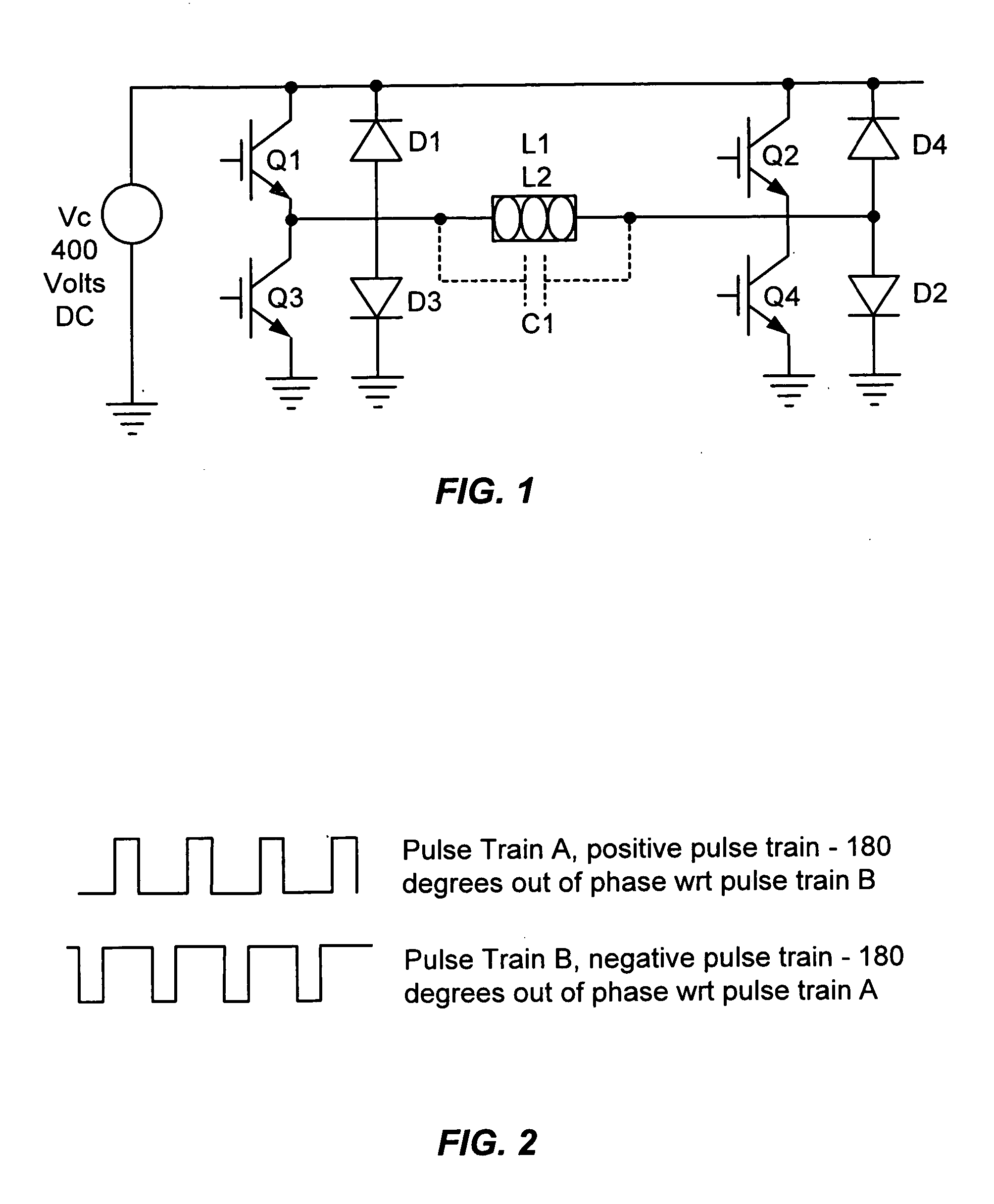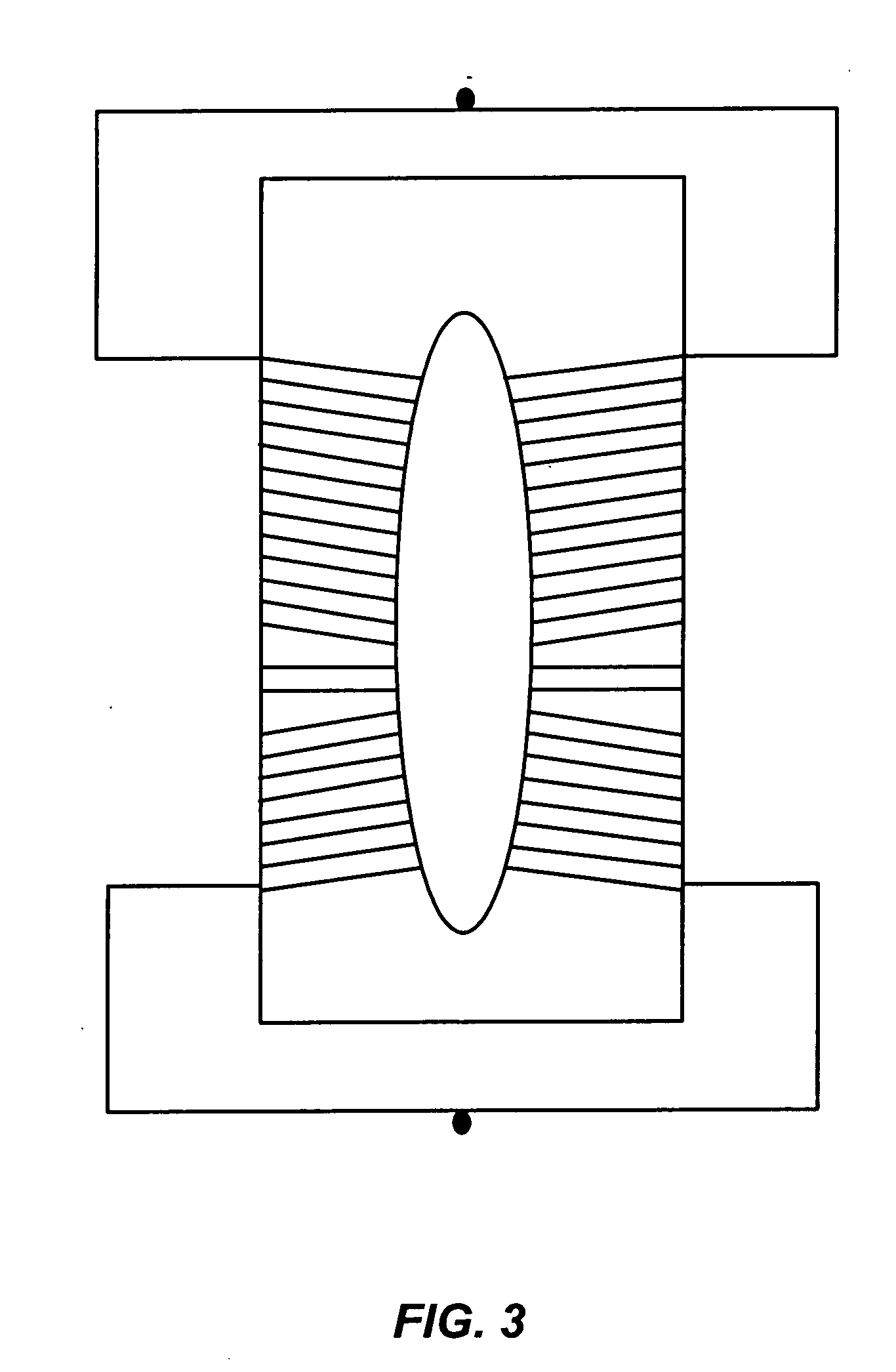Power driving circuit for controlling a variable load ultrasonic transducer
a transducer and variable load technology, applied in the field of ultrasonic systems, can solve the problems of limiting the operating frequency of the electrical system, limiting the power level of the scr system, and not allowing the effective control of the ultrasonic prob
- Summary
- Abstract
- Description
- Claims
- Application Information
AI Technical Summary
Benefits of technology
Problems solved by technology
Method used
Image
Examples
Embodiment Construction
[0015] Prior to the invention of the present ultrasonic generator, the prior art ultrasonic generators relied on Silicon Controlled Rectifier (“SCR”) technology. In these generators, the SCRs pulse current through an ultrasonic probe at a frequency of about 17.5 kHz. At this fast switching frequency, the SCRs can easily become overheated and fail. To address this overheating problem, the SCRs require a forced turn off system commonly know in the field of power electronics as “Forced Commutation.” This means that when a signal is delivered to the system to turn on the SCR, it will remain on for a specified amount of time after that signal is turned off. It is possible through forced commutation to make the SCR turn off faster. This forced commutation is required for a faster switching frequency of 17.5 kHz. Often due to this process the SCR becomes weakened and fails. Another problem with the SCR systems is that a specific capacitor arrangement is needed in order to make the forced c...
PUM
 Login to View More
Login to View More Abstract
Description
Claims
Application Information
 Login to View More
Login to View More - R&D
- Intellectual Property
- Life Sciences
- Materials
- Tech Scout
- Unparalleled Data Quality
- Higher Quality Content
- 60% Fewer Hallucinations
Browse by: Latest US Patents, China's latest patents, Technical Efficacy Thesaurus, Application Domain, Technology Topic, Popular Technical Reports.
© 2025 PatSnap. All rights reserved.Legal|Privacy policy|Modern Slavery Act Transparency Statement|Sitemap|About US| Contact US: help@patsnap.com



